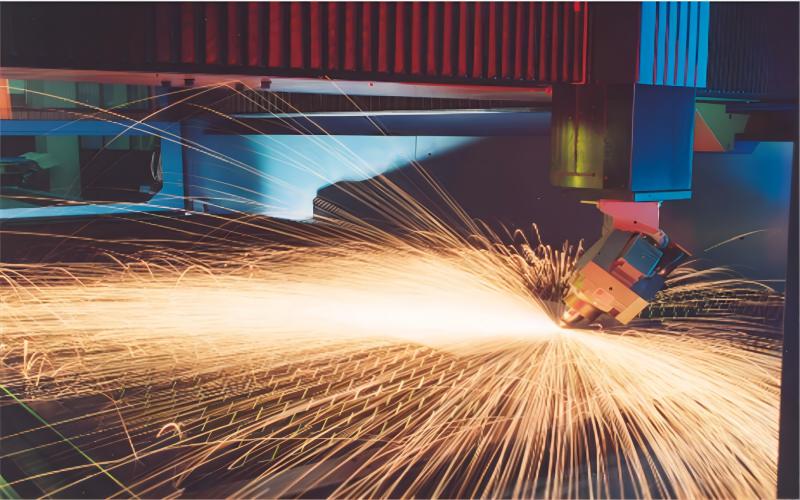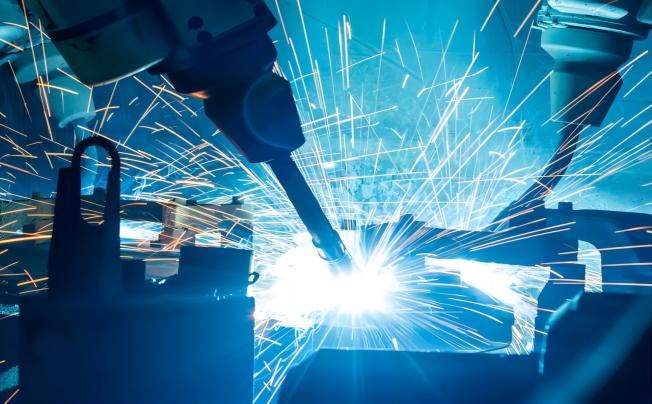Common Welding Methods
There are numerous ways to weld stainless steel tubing. Here are some typical procedures for welding stainless steel pipe:
1. Selecting the appropriate welding supplies: TIG, MIG, and Flux Cored Arc Welding (FCAW) consumables are only a few of the options available for welding. Considering that each type has benefits and drawbacks, picking the appropriate type is essential. For instance, TIG welding, which creates a cleaner surface than MIG or FCAW welding, is frequently employed for thin-wall applications. For thick-walled applications or where a higher deposition rate is necessary, MIG and FCAW are frequently utilized.
2. Prepare the pipe: Trim the pipe to the desired length and clean the pipe’s surface to remove any debris, oil, or other contaminants that could interfere with the welding process.
3. Pick a welding method: Some of the most popular methods for welding stainless steel pipes include gas tungsten arc welding (GTAW or TIG), gas metal arc welding (GMAW or MIG), and shielded metal arc welding (SMAW or stick welding). The thickness of the pipe, the desired level of weld quality, and the available equipment can all have an impact on the technique selection.
4. Install the welding equipment: Assemble the welding equipment, the gas supply, the filler material, and any other equipment as specified by the method you’ve chosen.
5. Become a pipe: Keep the weld at the right temperature, speed, and angle by adhering to the suggested welding technique for the method you’ve chosen. For instance, stainless steel pipes are widely used in TIG welding, which involves using a tungsten electrode to create an arc between the electrode and the pipe and adding filler metal as necessary.
6. Check the weld: After welding, inspect the weld for imperfections including fractures, porosity, or partial fusion. If any defects are found, fix the weld as needed.

Some Considerations for Welding
When it comes to welding stainless steel tubes and pipes, there is no sorcery involved. The final product will meet the prescribed quality standards and preserve its intended corrosion-resistant properties if the filler metals, joints, cleanliness, and welding techniques have been used properly. However, improvements to tried-and-true procedures and methods enable pipe fabricators to boost output without compromising stainless steel’s resistance to corrosion.
1. Choosing the filler metals
For stainless steel tubes, filler metals are chosen to meet the application’s needs and enhance the weld’s performance. A reduced maximum carbon concentration applies to filler metals with an “L” designation, such as ER308L. Low-carbon stainless steel alloys’ corrosion resistance is maintained, which is important for high-purity applications including food, beverage, and pharmaceuticals. The filler metals denoted by a “H” on the other hand, have a higher carbon content and are ideal for applications requiring more strength, particularly at high temperatures. On the other hand, filler metals with a larger silicon content can boost production by boosting butt jointing, weld pool fluidity, and traveling speeds.
2. Problems with and remedies for sensitization
The primary factor reducing corrosion resistance is sensitization. The “stainless” coating of stainless steel is composed of chromium oxide. Chromium carbide will form, which will bind the chromium and stop chromium oxide from forming if the carbon content of the weld and nearby heat-affected zone is high. As a result, the steel starts to corrode, which is necessary to obtain the desired corrosion resistance.
There are three ways to deal with the sensitization issue. The first is to employ filler metals and a low-carbon matrix to minimize or completely remove carbon. Because carbon plays a significant alloying role in particular applications, this approach is not always viable.
The second technique involves reducing the amount of time the weld and heat-affected zone spend at temperatures that can cause sensitization, reducing the number of welds, and welding with the least amount of heat input possible to accomplish rapid cooling.
Utilizing filler metals with particular alloying compositions to stop the development of chromium carbides is a third technique.
3. For corrosion resistance to remain, protective gases are necessary
Argon is typically used as a back-blowing gas when welding stainless steel pipe, although this can result in the development of some nitrides at the weld’s root, reducing corrosion resistance. For gas tungsten argon arc (TIG) welding of stainless steel pipes, experts advise using straight argon.
Flux-cored wires for welding stainless steel are created by manufacturers to function in a typical 75/25% Argon/Carbon dioxide gas mixture. The weld is protected from contamination by carbon in the shielding gas thanks to the flux composition. Additionally, the slag cover’s fluxing action eliminates extra carbon and keeps it from seeping into the weld seam. No blowback is necessary for the successful welding of 304 stainless steel when employing the Regulated Metal Deposition (RMDTM) technique. Duplex stainless steel, however, needs to be purged with an inert gas, such as argon.
4. Controlling heat input and speed drives the process
Controlling heat input, cooling, corrosion resistance, and distortion are all important aspects of the welding process. TIG welding is still the best option for high-purity tubing with diameters of 6 inches or smaller and wall thicknesses in Class 10 because it is typically used to weld stainless steel tubing. Autogenous TIG square-butt welding is the recommended procedure for high-purity food-grade stainless steel. By using this technique to fuse the tube without using any filler metal, heat is reduced and any potential chemical alterations are also removed. Any pipe that is less than 1/8″ thick normally undergoes this procedure. Beveling the pipe and adding filler metal become necessary as pipe thickness rises to 10 to 40 inches. TIG welding is still the best option for some smaller diameters and thicker walls (such as Schedule 80 with a 2-inch diameter).


